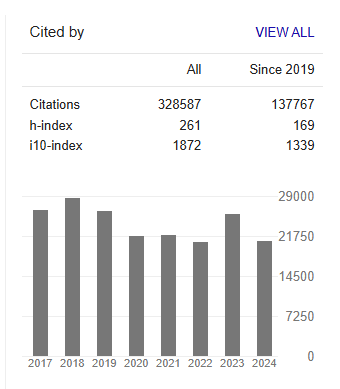The Relativistic Big-Bang and the Thermodynamic Importance of Initial Cosmic Kinetic Masses
Abstract
Hans J. Fahr
In recent papers by Fahr (2023) and Fahr and Heyl (2024) we had shown that an instantaneous, initial Big-Bang explosion of a purely material universe can not have happened [1,2]. At least not by itself, as is most often envisioned, any way not solely caused by the enormous pressure of the matter in the singularity of the initially extremely hot, highly condensed cosmic matter.
This is due to the strongly enhanced centripetal gravity field, increased by the gravitating mass of the relativistic, kinetic cosmic masses. where by the anticipated explosive action of the material pressure is nullified. Instead, as was argued by us, the initial "Bang" rather must have started from a pressurized cosmic vacuum with its explosive pressure, otherwise a "Bang" never could have happened.
In the above mentioned papers we thus analysed how to adequately describe this cosmic vacuum pressure and how to formulate the initial scale expansion of the universe, occuring solely on the basis of that newly considered, cosmic ingredient. Thereby it became evident that for a needed positive vacuum pressure the thermodynamic polytrope relation between vacuum energy density ρvac and vacuum pressure pvac for the purpose of a cosmic scale expansion �? > 0 only allows for a very limited range of vacuum polytrope indices ξ of 3 < ξvac < 5. For the prefered value ξvac = 4, one can derive a complete description of the cosmic vacuum energy as function of the cosmic scale R and the cosmic time t with inclusion of a process of cosmic matter generation in the course of the cosmic expansion by a specific vacuum condensation process producing a material universe for the later expansion phases. As result one so far obtains a matter universe well familiar to all present day astronomers, however, without the need for an initial, purely material Big-Bang of a mass singularity.
The aspect which was not carefully taken into account so far is the cosmologic importance of the initially relativistically hot cosmic matter and its genuine thermodynamics. This shall become the new subject here. As a surprise, however, in any case the Hubble expansion of the post-recombination universe under the action of cosmic vacuum pressure drives the baryonic distribution function into a more and more non-equilibrium shape with over-Maxwellian populations of the high velocity wings demonstrating surprisingly enough that the cosmic matter temperatures in this expansion phase are in fact increasing with scale R, opposite to classical expectations which, strictly speaking, would predict adiabatic temperature decreases. We determine the distribution function of cosmic gases in this expansion phase and find that structure formation must have run different from what is presently thought.



